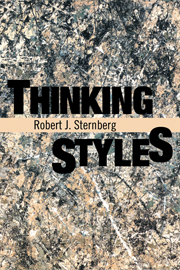5 - The Principles of Thinking Styles
Published online by Cambridge University Press: 05 August 2012
Summary
I'm writing this book because I know I like writing books, and I think I have something to say. I have written or edited about 50 books, so it would be safe to say that writing books is one way I like using my abilities. There are other psychologists who have never written any books, and who would be reluctant to write one. The fact that I like writing books and they don't doesn't mean that I write good books, or that they would write bad ones. This fact leads us to the first of 15 general points you need to understand about thinking styles before we proceed any further. These points will serve as the foundation for much of the rest of the book, and we will return to them again and again.
These points apply to my own theory and to many other theories as well. At the same time, here, as elsewhere, there are honest disagreements among theorists. Hence I cannot claim that everyone in the field would agree with every point I make.
Styles are preferences in the use of abilities, not abilities themselves. If there were no difference between styles and abilities, we would not need the concept of styles at all: It would be redundant with the concept of abilities. And in fact, some styles have been discounted when it has been found that they are indistinguishable from abilities.
- Type
- Chapter
- Information
- Thinking Styles , pp. 79 - 98Publisher: Cambridge University PressPrint publication year: 1997

